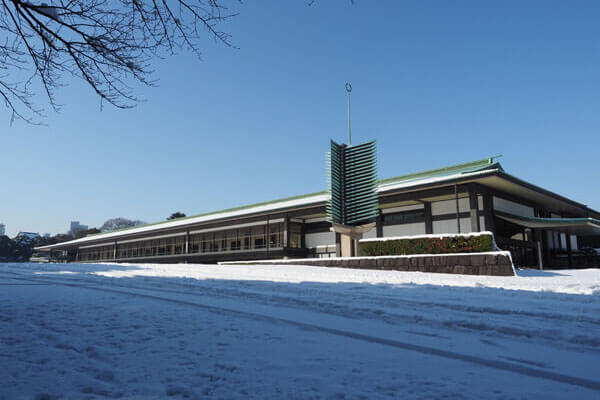Visit Guide
The city of Kyoto had been the site of the imperial residence since the relocation of the capital by emperor Kanmu in 794. The Kyoto Imperial Palace had been used as the residence of emperors for 500 years since 1331 until the capital moved to Tokyo in 1869. The palace was repeatedly plagued by fire and was rebuilt each time. Most of the present buildings were rebuilt in 1855. Visitors can observe the transition of the history of architectural style and the essence of the court culture through the buildings since they were rebuilt in architectural styles of various eras from the 8th century.
Among them, the most prestigious building is the Shishinden (Hall for State Ceremonies). The building was constructed in the Heian Period style (794-1185) to accommodate the Enthronement Ceremony which was held in traditional manners. The Enthronement Ceremonies of emperors Meiji, Taishō, and Shōwa were held in the present hall and the Takamikura Imperial Throne for the Emperor and Michodai August Seat of the Empress used for the ceremony are located inside.
Presently, some of the important court events such as the Kyoto Imperial Palace Tea Party hosted by Their Majesties the Emperor and the Empress sometimes are celebrated here. The palace also receives state guests and plays an important role as a place that introduces Japanese court culture to foreign dignitaries. On the palace grounds, besides the palace buildings, are two gardens. In the main garden, called Pond Garden, a spacious pond dominates the center, and the other garden, called Inner Garden, where variously styled stone lanterns presented by some prominent feudal lords can be seen. The seasonal changes of flowers and trees are a delight for visitors to the palace grounds.
Information of the Facilities
Click on a photo for detailed information
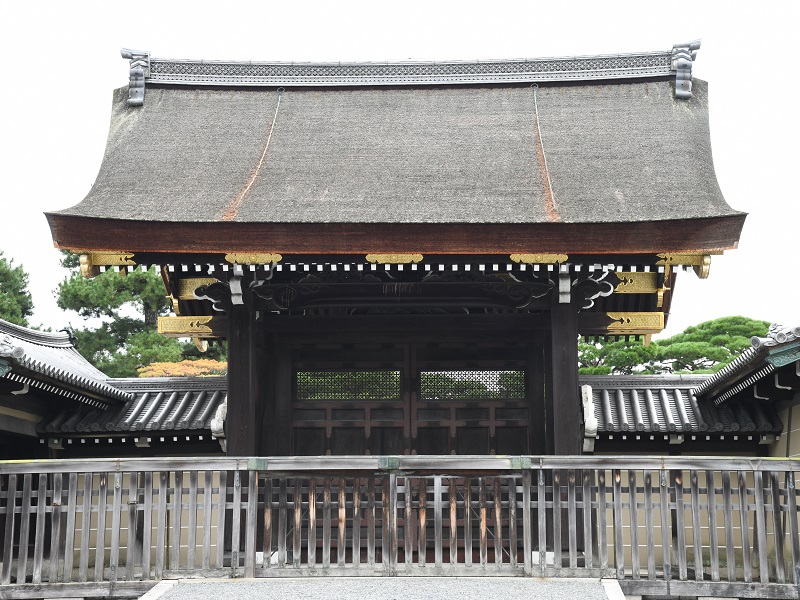 Gishūmon Gate
Gishūmon Gate  Okurumayose(Carriage Porch)
Okurumayose(Carriage Porch)  Shodaibunoma (Waiting Rooms)
Shodaibunoma (Waiting Rooms) 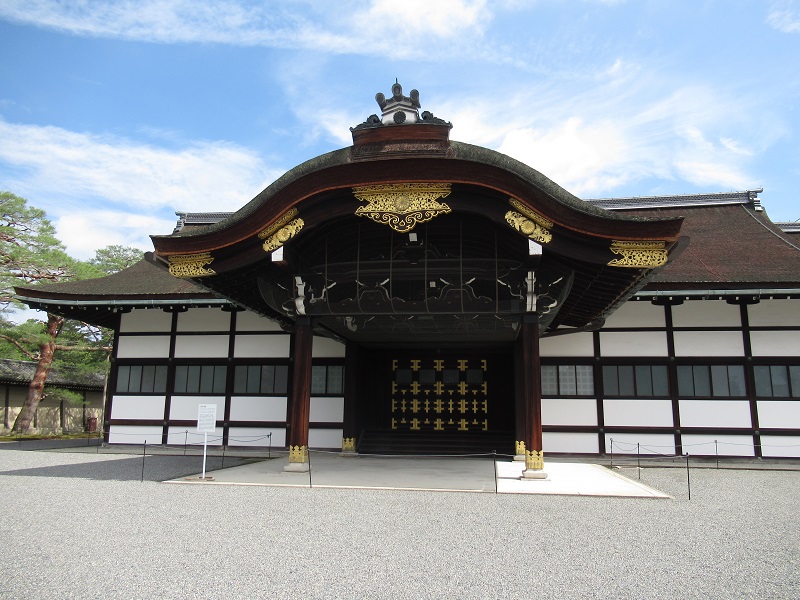 Shinmikurumayose (New Carriage Porch)
Shinmikurumayose (New Carriage Porch) 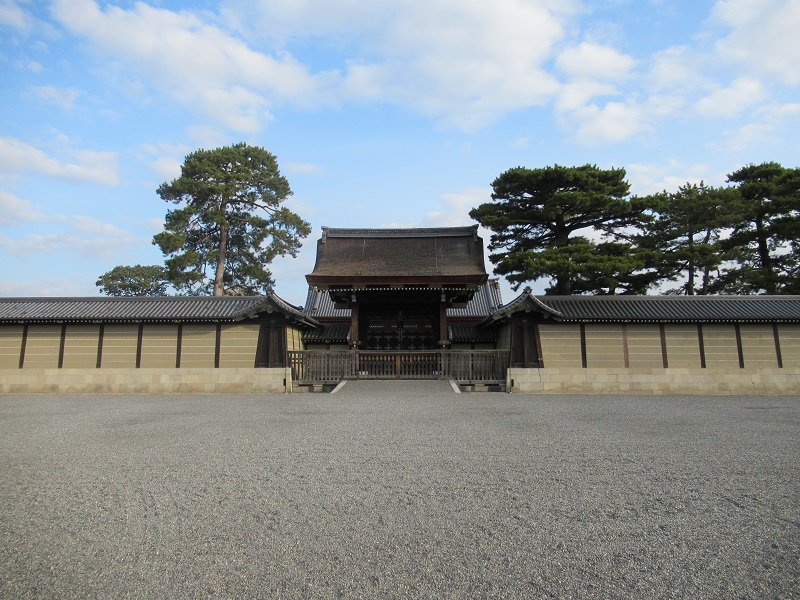 Kenreimon Gate
Kenreimon Gate 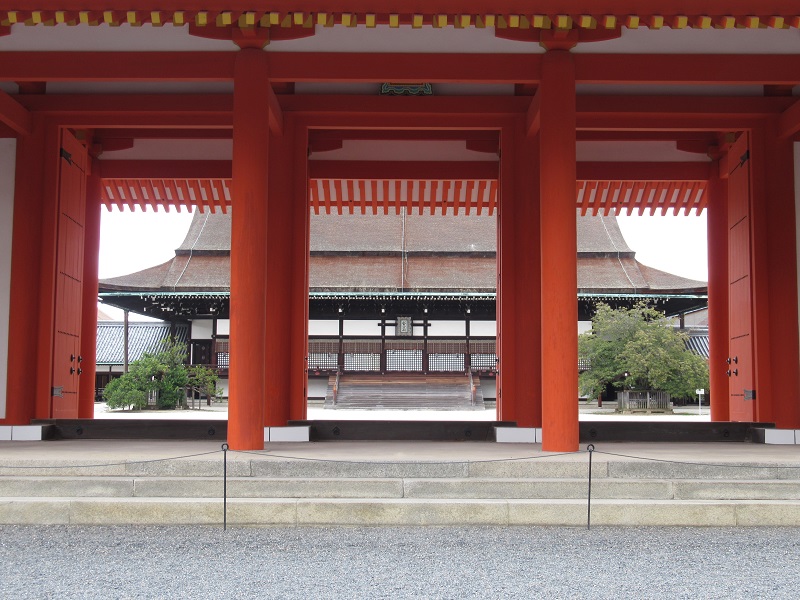 Kairō(Corridors)
Kairō(Corridors) 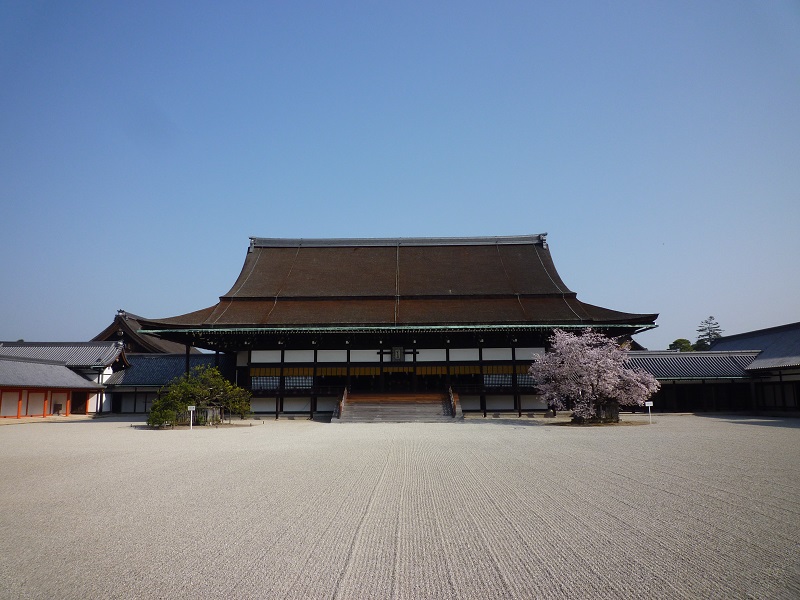 Shishinden(Hall for State Ceremonies)
Shishinden(Hall for State Ceremonies) 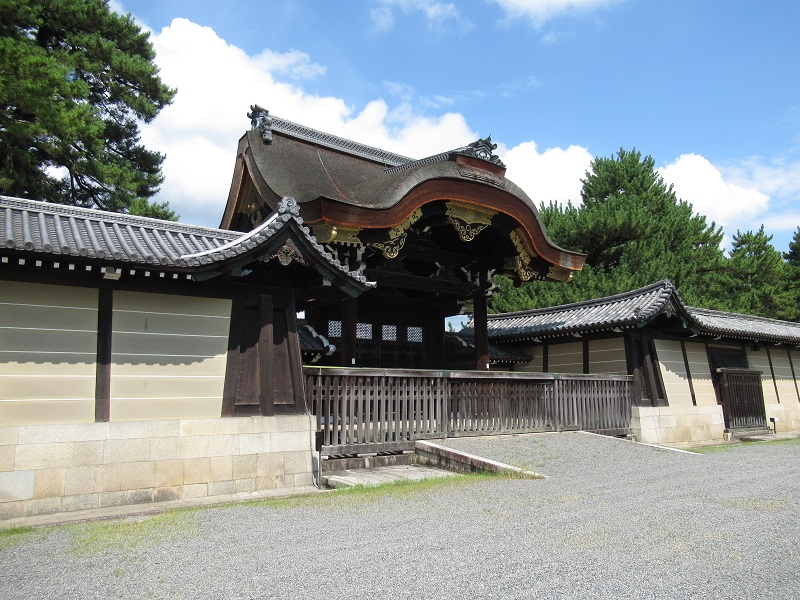 Kenshunmon Gate
Kenshunmon Gate 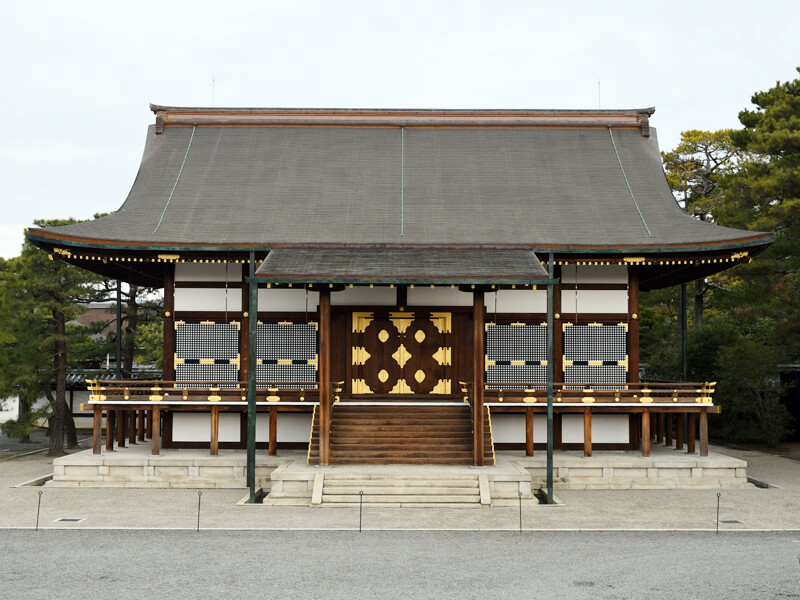 Shunkōden(Imperial Sanctuary)
Shunkōden(Imperial Sanctuary)  Seiryōden(Hall for Ceremonies)
Seiryōden(Hall for Ceremonies)  Kogosho (Palace for Ceremonies and Imperial Audiences)
Kogosho (Palace for Ceremonies and Imperial Audiences)  Kemarinoniwa (Playground for Ancient Football Game of the Imperial Court)
Kemarinoniwa (Playground for Ancient Football Game of the Imperial Court)  Ogakumonjō (Palace for Study and Other Ceremonies)
Ogakumonjō (Palace for Study and Other Ceremonies)  Oikeniwa(Pond Garden)
Oikeniwa(Pond Garden)  Otsunegoten(Imperial Residential Palace)
Otsunegoten(Imperial Residential Palace)  Gonaitei (Inner Garden)・Kintai (Tea House)
Gonaitei (Inner Garden)・Kintai (Tea House)  Kōshun(Inner Palace)・Osuzumisho(Inner Palace)・Chōsetsu(Tea House)
Kōshun(Inner Palace)・Osuzumisho(Inner Palace)・Chōsetsu(Tea House)  Omima(Palace for Rites and Rituals )
Omima(Palace for Rites and Rituals )
 Traffic Access
Traffic Access

Access
- Karasuma Line, Kyoto City Subway: 5 minutes from Imadegawa Station
- Kyoto City Bus: 5 minutes from Karasuma-Imadegawa bus stop
- Keihan Railway: 20 minutes from Demachiyanagi Station
 Meeting Spot for the Walk-in Registration
Meeting Spot for the Walk-in Registration

 Visitor Information Map
Visitor Information Map

 Tour Course
Tour Course
- Okurumayose(Carriage Porch)
- Shodaibunoma (Waiting Rooms)
- Gishūmon Gate
- Shinmikurumayose (New Carriage Porch)
- Kenreimon Gate
- Kairō(Corridors)
- Shishinden(Hall for State Ceremonies)
- Kenshunmon Gate
- Shunkōden(Imperial Sanctuary)
- Seiryōden(Hall for Ceremonies)
- Kogosho (Palace for Ceremonies and Imperial Audiences)
- Ogakumonjō (Palace for Study and Other Ceremonies)
- Kemarinoniwa (Playground for Ancient Football Game of the Imperial Court)
- Oikeniwa(Pond Garden)
- Otsunegoten(Imperial Residential Palace)
- Gonaitei (Inner Garden)・Kintai (Tea House)
- Kōshun(Inner Palace)・Osuzumisho(Inner Palace)・Chōsetsu(Tea House)
- Omima(Palace for Rites and Rituals )
The Imperial Palace, Kyoto Imperial Palace, Kyoto Sento Imperial Palace, and Imperial Villas
Visit Guide
